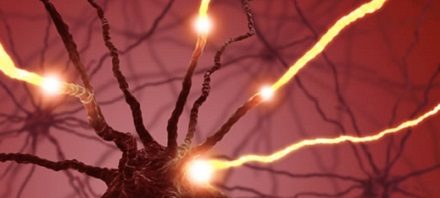Lou Gehrig’s disease is also called ALS. It is a motor neuron disease that impairs the physical activities in the life of the patients with ALS.
ALS begins with muscles weakness, stiffness, softness, tightness, or spastic. The patients with ALS feels fatigue, poor balance, slurred words, weak grip, or tripping. These symptoms may be so subtle they occur before diagnosis. The next stage of ALS presents with more widespread symptoms from above, paralyzed muscle groups, deformed and rigid joints, weakness in swallowing, unable to drive, weakness in breathing when lying down, and bouts of inappropriate laughing or crying. The final stage of ALS presents with most all voluntary muscles paralyzed such as speech, eating, drinking, limited ability to move air into and out of lungs (breathing) and poor respiration leads to fatigue, scattered thoughts, headaches, and pneumonia. In the last stage, the patient with ALS have a high risk of death.

Unfortunately, the diagnosis process of ALS usually takes 2 to 3 years, implying that the patients are usually at the late stage when they find out that they have ALS. The treatments are also limited. The treatments do not target to the specific area in the growth of ALS. Instead, they just try to slow down the progression of ALS disease.
In a current study, the oxidative stress, the mitochondrial damage and the RNA dysfunction are the important mechanisms contributing to the initiation and progression of ALS:
The mutant Fuse in Sarcoma (FUS) and TAR-DNA binding protein (TDP43) protein tend to aggregate and trap within the cytoplasm, leading to the impairment transcription and growth of motor neuron. This creates more oxidative stress in the cell. The autophagy and protein degradation, such as SOD1 and UPR, help to keep the oxidative stress at the normal level. When they are unable to resolve the oxidative stress in a timely manner, they shift their function to destroy the cells. Apoptosis is now the goal.
The key players in ALS disease:
- Fuse in Sarcoma (FUS) is essential in the nucleus and cytoplasm. In the nucleus, it is a transcription factor, a pre-mRNA splicing, and bringing other transcription factors together to initiate the transcription process. In the cytosol, FUS has less functions, so small amount of FUS is present in cytoplasm. FUS importantly acts as a mRNA transporter, bringing mRNA out of the nucleus. When FUS is mutated, it tends to aggregate and accumulate in the cytosol, leading to the inability for mRNA to be spliced properly, less miRNA produced, transcription issues, lack of mRNA transport to the dendrites in the cell that require it and destabilization of important mRNA.
- TAR-DNA binding protein (TDP43) is a DNA/RNA binding protein. It has the similar functions like FUS. It plays an important role in transcription and translation process. It also involves in stress granule response under condition of stress.
- SOD1 is a mainly cytosolic antioxidant enzyme that convert superoxide (O2–) into hydrogen peroxide (H2O2). Its important function in the complex defense against reactive oxygen species that are produced by the cell during normal cellular metabolism. Mutation SOD1 increase protein and lipid oxidation, making the metabolism work more and producing more ROS. In addition, mutant SOD1 sometimes runs in reverse, catalyzing the conversion of H2O2 into O2–, and worse, allows the nascent O2– to react with nitric oxide (NO) to yield peroxynitrite (ONOO–). Peroxynitrite intitate the oxidative stress in the cell and ultimately leading to motor neuron death.
- Oxidative stress may also lead the formation of unfolded protein. Unfolded Protein Response (UPR) is a cells response to restore normal function of the cells, breakdown of the misfolded proteins and increasing the production of chaperones in protein folding.
More studies are needed to understand in depth the mechanism of ALS disease to come up with the better treatments as well as improving the diagnosis process that is able to diagnose at the early stage in order to suppress effectively the growth of ALS.
